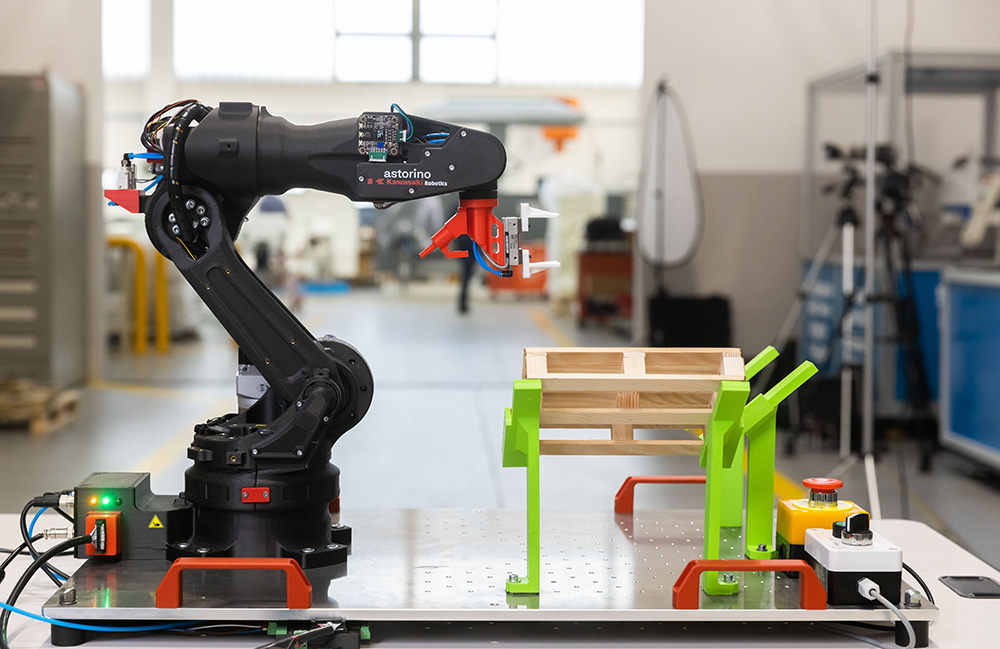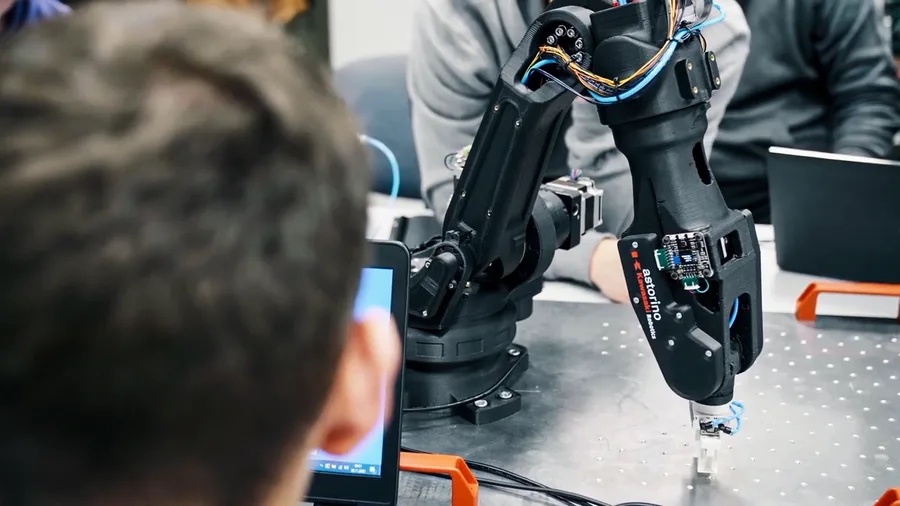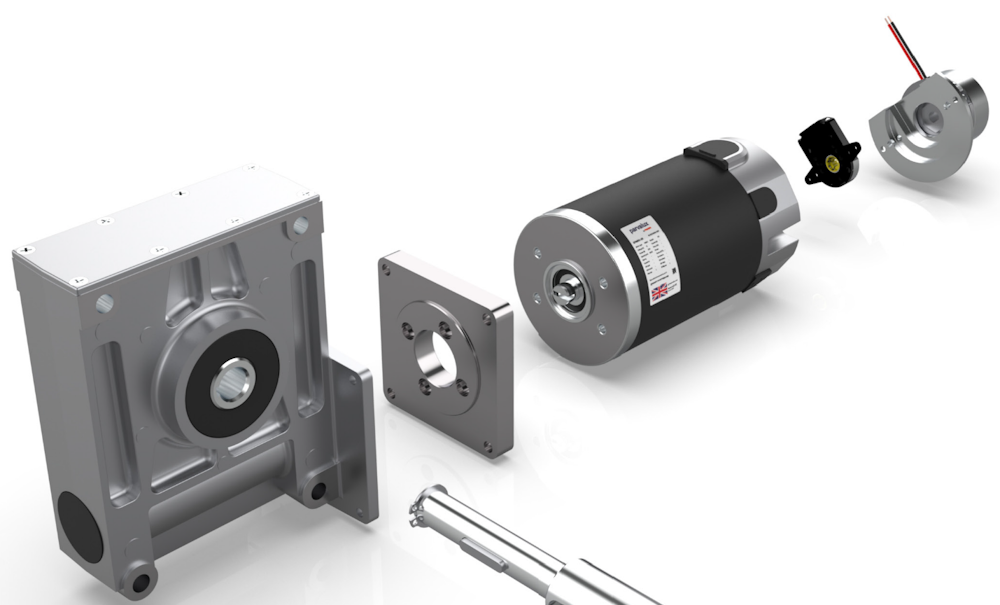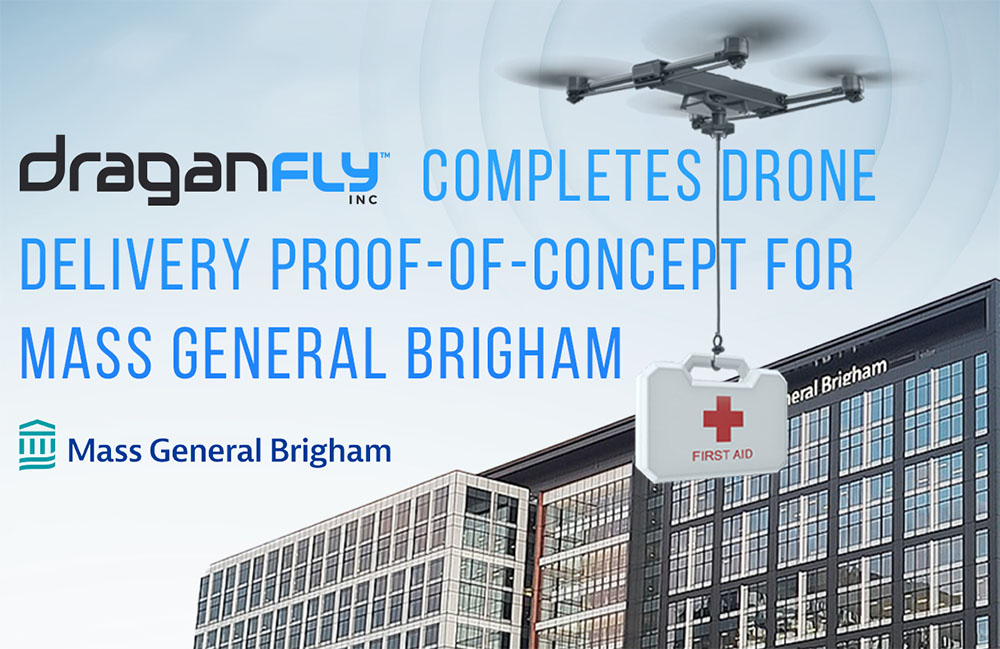Kawasaki says that if students can learn to program Astorino, then they can learn to program any kind of Kawasaki robot. | Source: Kawasaki Robotics
There are currently 174,213 robotics engineering jobs in the workforce today, according to the College Board. These jobs are expected to grow at a 6.41% rate in the next five years, opening the door for many qualified individuals to enter the field. To remain competitive and land these jobs, it’s more important than ever that students gain hands-on experience with robots before they enter the workforce. Kawasaki Robotics (USA) Inc. last week unveiled Astorino, an educational robotics platform for industrial and technical education providers.
With Astorino, Kawasaki aims to offer the capabilities of a modern industrial robot at a fraction of the cost of other systems for the educational market. The Wixom, Mich.-based company said it will enable educators to more easily equip students with the foundational, real-world skills needed as manufacturing continues to evolve.
“Astorino is really in a league of its own,” Alexandre Boffi, the manager of general industries at Kawasaki, told The Robot Report. It’s a completely new idea and a new approach to robotics education and training.”
“Instead of metal, it’s 3D printed. Because it’s 3D printed, we can keep the weight down,” he added. “It’s not servo-driven, it’s driven by step motors, so the safety concerns that you’d have with traditional robots aren’t here.”
“Really, it’s different from all other robots in the fact that it’s not meant to be performing an automated task as much as it is designed from the ground up for education,” said Boffi.
Astorino weighs only 12 kg (26.4 lb.) and is powered by a 110V outlet. Kawasaki claimed that the robot is adaptable to any classroom environment.
At the core of Astorino is a 1 kg (2.2 lb.)-payload, six axis robot with a structure and programming environment nearly identical to that of a Kawasaki industrial robot. The company showed the robot to the public for the first time at the 2024 IMTS Smartforce Student Summit.
Kawasaki makes its first foray into educational robots
Astorino is named after the popular open-source Arduino platform and ASTOR, Kawasaki’s development partner. ASTOR designed, developed, and built Astorino.
Kawasaki said Astorino marks its first steps into the educational robot market. Boffi said that before Astorino, Kawasaki would provide its smaller industrial models for interested universities, but these robots were often too big and expensive for university labs.
“Some of our competitors did a really good job early on in providing some robots to universities, and that’s what people learn to program on,” Boffi said. “That’s what they get comfortable with. And then when they go out and get jobs at manufacturers, that’s what their preference is.”
“We are advertising Astorino at a starting price of $5,000,” he said. “So what that means for the educator is that instead of buying one robot and having eight to 10 students learn on it, they can buy five robots, and everybody gets more time with the robot.”
Boffi said that he doesn’t expect Kawasaki to catch up to more established competitors with entire lines of educational robots, but to make a more accessible robot. Instead, Kawasaki is prioritizing accessibility and flexibility with its robots.
Kawasaki emphasizes flexibility and safety with Astorino
Astorino is the product Kawasaki Robotics’ extensive technology expertise, including hardware, firmware, control systems, application software, and training. The platform also comes with STL files so students can rapidly print 3D replacement parts for 99% of the robot.
“The idea is that if we supply these files, and if the class breaks something, then they can go and print up the spare part themselves,” Boffi said. “Or if we supply all the parts, maybe the first semester they build the thing, and the second semester, they learn how to program it.”
The entire robot being 3D printed means it is lighter, cheaper, and provides ample opportunities for students to customize the system.
“You can imagine the things that we’ll see on YouTube in three or four years, with people modifying this robot and learning new ways to do it,” Boffi said. “But most importantly, they’re going to be learning it on a Kawasaki.”
The Astorino platform includes a built-in control system, dedicated firmware and software, Modbus TCP and USB/Ethernet communication, and safety functions such as E-Stop and safety brakes. The motor control uses three signals — pulse/direction/enable — and steel gears reduce backlash to <5 arcmin.
The robot is flexible and can also be paired with multiple options such as three kinds of grippers, a 24V IO module, a cube feeder with optical sensors, and external sensors. Astorino’s motors ensure it is safe enough to use in an educational setting and by students of all ages, according to Kawasaki.
“Where traditional robots use servo motors, which will ultimately push through and go to their position no matter what’s in the way, Astorino is using stepper motors, which don’t have that kind of force and capability,” Boffi said. “So the trade-off is you don’t have a lot of payload capability, but that’s not the goal with Astorino.”
Kawasaki offers an interactive learning approach to increase knowledge retention and provide a comprehensive view of robotic systems. | Source: Kawasaki Robotics
Astorino aims to better student-to-equipment ratio
At a base price of $5,000, educators can now afford to provide a low student-to-equipment ratio so each student can spend more time directly working with the robots.
“Above all, everybody is saying, ‘This is great because it allows me to get more tools for the same amount of money, and that means more students can have access to it,’” Boffi said.
“I went to Central Michigan University, and I took a robotics. I think our lab had a FANUC, and there were probably 20 to 25 people in that course,” he said. “We probably had one robot, and then one that wasn’t working, so one and a half robots. And truthfully, I didn’t get a lot of time on that robot.”
For the same amount of money it cost to get that one robot, Boffi said his university could now get eight Astorinos, with each robot split between only four students.
“It’s also more accessible to younger students,” he added. “Really, the danger with a full-size industrial robot for younger students is that if something goes awry, they can get really hurt. And then if you want to add all the protections to it, that gets expensive.”
Moving forward, Boffi said Kawasaki is interested in offering a seventh axis for the robots. It’s also looking at different grippers it can offer, although the robot’s flexible nature means users can customize their own end effectors.
The open architecture of the robot leaves the door open for universities to use this robot in applications Kawasaki never imagined, but that’s the exciting part, said Boffi.

 3 months ago
44
3 months ago
44











 English (US) ·
English (US) ·